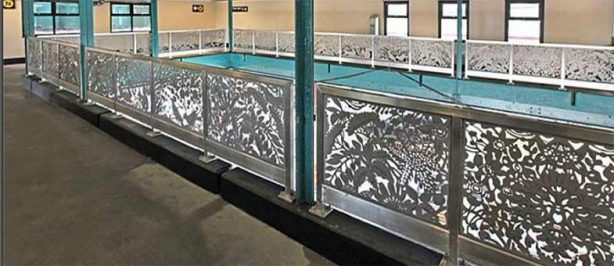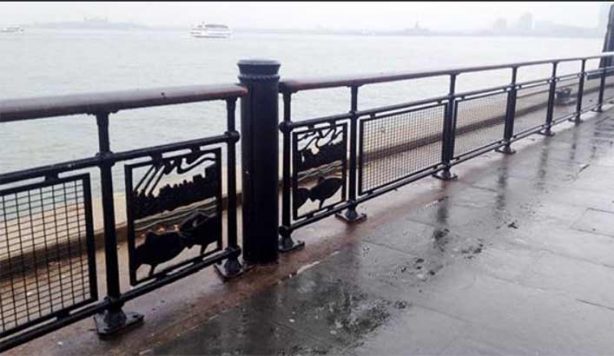
BY SERGEY KADINSKY
Forgotten NY correspondent
SECOND to Queens Boulevard, with its express and local lanes, the north-south version of this major artery is the combination of Woodhaven and Cross Bay Boulevard, which runs for over 11 miles between Queens Center Mall in Elmhurst and Rockaway Beach. While there is an ongoing debate on whether to revive the LIRR Rockaway Branch that parallels this boulevard or transform it into a linear park, the Q52 & Q53 Select Bus Service is the most direct way to go from one end of the boulevard to the oceanfront beaches.
In 2017, the city Department of Transportation had an artistic competition to transform the metal panels on four of the SBS stops with art installations. With their own dedicated lane, ability to regulate traffic lights, and stops with seats, rain shelter, maps, and arrival times, the city’s SBS routes resemble the streetcars of old or the light rail of today, minus the tracks. As these bus stops resemble train stations, it makes sense to give them art installations as subway stations have them. Both are part of the Percent for Art program.
Above we see the southernmost of these installations at Liberty Avenue, where Woodhaven Boulevard continues south as Cross Bay Boulevard. At this intersection is the former Cross Bay Theatre, which Kevin documented in 2021.
The panels here show waves and the sun, a reminder of the ocean beach where this road ends. I can imagine this art program expanding to other SBS routes that have stops on medians, such as Pelham Parkway and Manhattan’s Third Avenue.
The sepia tone of some of the photos is not a filter. It is the result of the forest fires in Quebec whose smoke floated to New York in the second week of June 2023.

One example of public art on metal panels is Nature Rail, by Andrea Dezso, on the 62nd Street subway station in Brooklyn.

Another precedent is The River That Flows Two Ways, a 37-panel work by Wopo Holup, at Battery Park, which evokes the native Lenape name for the Hudson River.

On the northbound stop at Jamaica Avenue, the fence installation features carousel horses, likely in honor of the historic Forest Park Carousel, which is a mile to the north of here.

At 91st Avenue, the panel features racing horses in honor of Woodhaven’s past, when it hosted the Union Course, where horses raced between 1821 and 1872. Its most famous competitor was a thoroughbred named Fashion. In the 19th century, Queens had many horse racing tracks, but as of 2023, only the Aqueduct remains in business.

In a changing cityscape, artworks such as these give the neighborhood a connection to its history and foster a sense of shared identity with previous generations of local residents.
Sergey Kadinsky is the author of Hidden Waters of New York City: A History and Guide to 101 Forgotten Lakes, Ponds, Creeks, and Streams in the Five Boroughs (2016, Countryman Press), adjunct history professor at Touro University and the webmaster of Hidden Waters Blog.
As always, “comment…as you see fit.” I earn a small payment when you click on any ad on the site.
6/10/23


2 comments
Until now, I didn’t know bus stops can have artwork, because it’s usually the subway stops that have them.
Another piece of silhouette art is the John Finley Walk sign in
Carl Schurz Park which evokes the walk of John Finley.